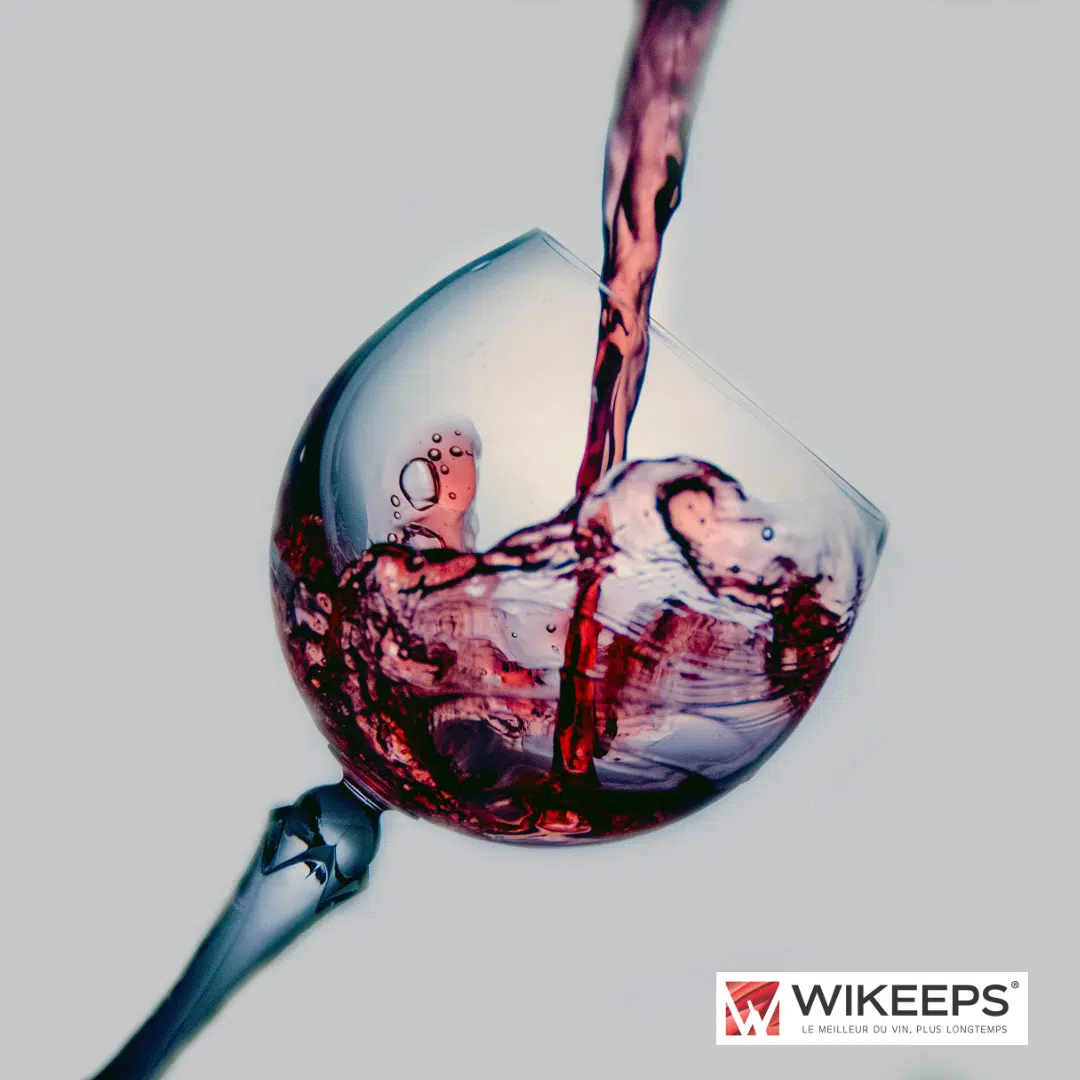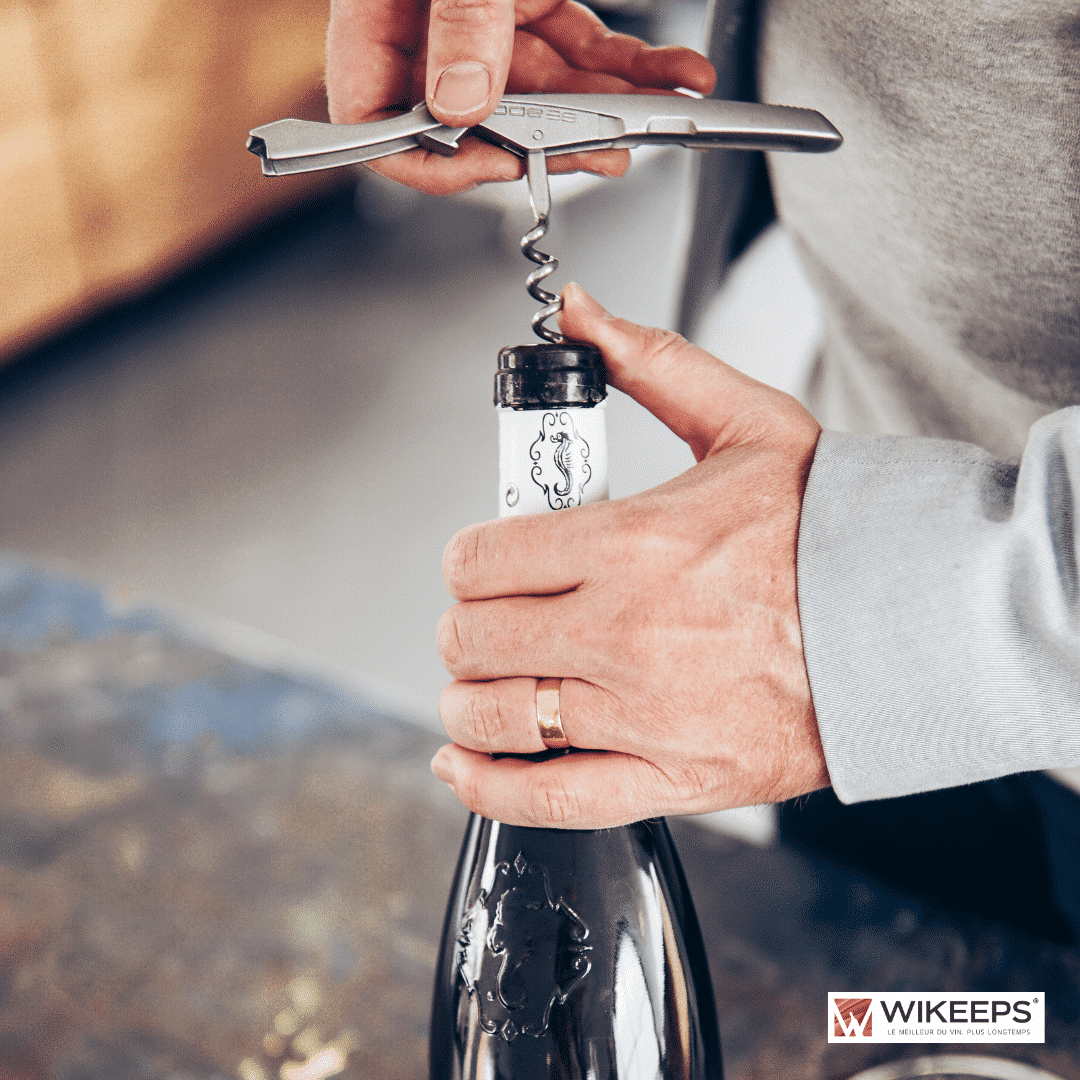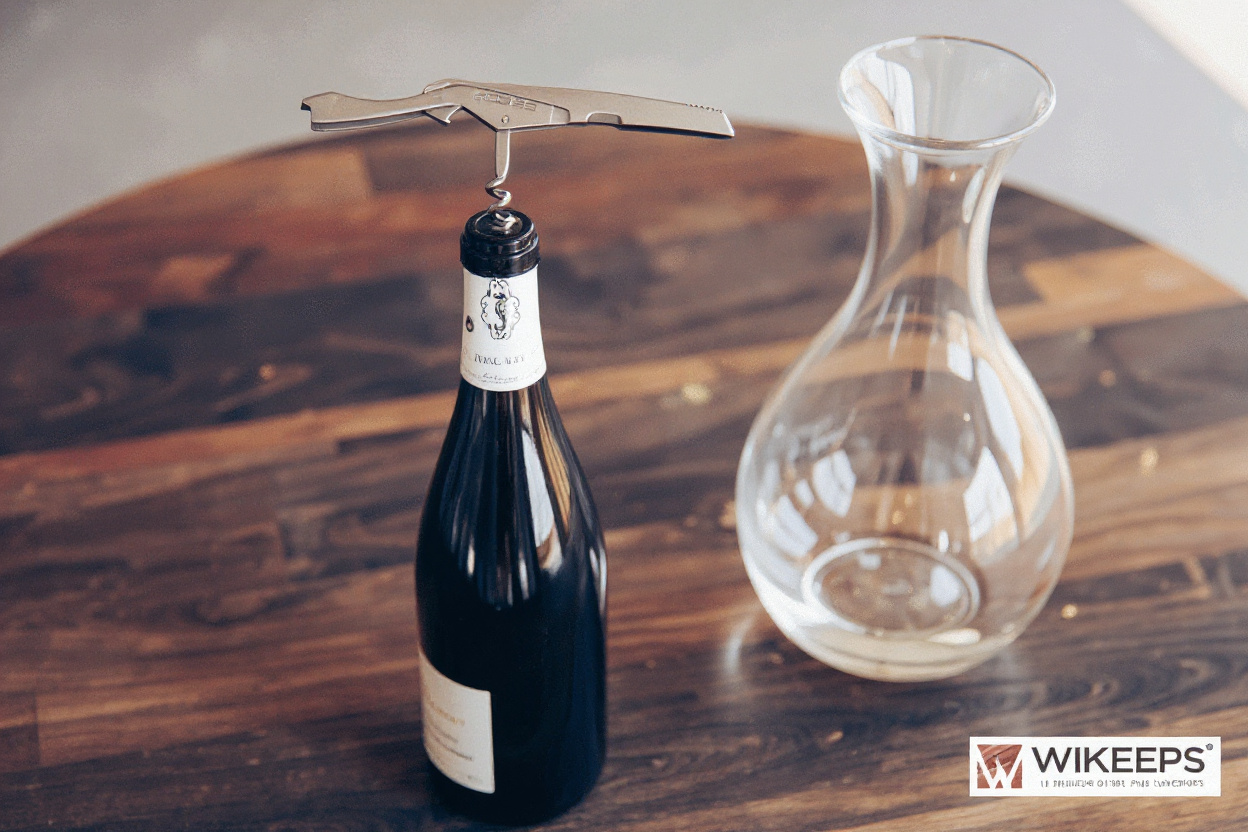Wine aerators and pourer buying guide
Aerators come in five core designs: pour-through chambers you hold over the glass, compact in-bottle spouts that screw onto the neck, decanter-style funnels for sediment control, electric pumps for repeatable high-volume service, and multi-stage units that maximize surface contact. Each format balances portability, flow rate, and cleanup ease, so matching the right type to your pour frequency and wine selection is the first step toward consistent flavor improvement.
Does a wine aerator really work
A wine aerator accelerates oxidation by forcing liquid through narrow channels that pull in air via the Venturi effect, forming micro-bubbles that mimic twenty to ninety minutes of decanter breathing in a single pour. Young, tannic reds like Cabernet Sauvignon, Syrah, and Malbec show the most dramatic gains: harsh edges soften, fruit notes bloom, and the bouquet opens immediately. Side-by-side tastings reveal these differences within seconds, making aerators practical for weeknight dinners or impromptu gatherings when decanting time is unavailable.
The mechanism relies on turbulence creating maximum wine-air contact; multi-stage designs pass the stream through screens or baffles to amplify this effect without splashing. Electric models add forced air or micro-diffused bubbles for consistent results across multiple pours, ideal for restaurant or bar service. However, effectiveness varies by wine style and aerator intensity, so always pour a small test glass to confirm the flavor profile improves rather than strips delicate aromatics or stirs unwanted sediment.
Best aerators and pourer for fast flow
Our Wikeeps serve-aerate-preserve dispensing gun stands apart by integrating pouring, in-flow aeration, filtration, and gas-blanket preservation into one trigger action. The patented French design oxygenates wine as it exits the spout, instantly opening aromas and softening tannins, while an oenological gas cartridge displaces headspace oxygen to keep the remaining bottle fresh for up to thirty days. This dual function eliminates the need for separate handheld aerators, decanter funnels, and vacuum pumps, streamlining service for sommeliers, wine bars, and home enthusiasts who value speed and shelf-life extension equally.
Setup takes three steps: fit the cap and spout onto the bottle, screw in a gas cartridge—still-wine mix is Argon seventy-nine percent plus CO₂ twenty-one percent; sparkling Bubbl. mix is CO₂ eighty percent plus N₂ twenty percent—then pull the trigger to pour. The system handles both still and sparkling wines by switching modes, locking in effervescence for up to a week and supporting broad by-the-glass programs at tastings or tourism events. Professional-grade build and the Oenovation Trophy recognition underscore its reliability under high-volume conditions.
Aeration calibration during the pressurized pour maintains mouthfeel without over-oxidation, and optional filter spouts capture sediment from mature or unfiltered natural wines without slowing flow. Because preservation and aeration work together, every glass tastes freshly decanted even days after opening, reducing waste and enabling tasting flights or sample pours that would spoil with conventional stoppers. The compact, temperature-aware kit suits pop-ups and outdoor events, replacing bulkier barware and delivering repeatable, elegant presentation with minimal training.
What wines should not be aerated
Delicate whites—Sauvignon Blanc, Albariño, unoaked Chardonnay—and light-bodied rosé can lose their floral and citrus notes under aggressive aeration, as excessive oxygen strips volatile aromatics faster than it softens structure. Very old or fragile reds also risk flavor collapse; aged Burgundy, mature Rioja, or thin-skinned Pinot Noir may shed nuance and develop flat, muted profiles when forced through high-turbulence chambers. For these bottles, gentle decanting by slow, angled pouring into a wide vessel preserves complexity better than instant oxygenation devices.
Sediment-heavy wines—vintage Port, unfiltered Barolo, or cellared Bordeaux—pose clogging risks in narrow aerator tubes and can cloud the glass if the stream disturbs settled particles. Standing the bottle upright for several hours before service and using a decanter funnel with a built-in mesh filter offers safer sediment control than pressurized aerators. Always taste a small aerated sample first; if aromatics diminish or the texture turns thin, skip the aerator and rely on natural breathing or minimal swirling to open the wine gradually.
Wine aerators with preservation by Wikeeps
The Wikeeps system brilliantly solves wine’s greatest dilemma: aeration enhances flavor, but oxygen causes spoilage. Our innovative dispensing gun instantly aerates wine as it flows through the spout, achieving the same effect as hours in a decanter. Immediately after pouring, food-grade gas creates a protective layer in the bottle, preserving your wine’s freshness for weeks without compromising taste.
How our aerators and pourers differ
While standard aerators improve taste temporarily, Wikeeps goes further. As soon as you pour, our system combines instant aeration with a protective gas mix (Argon-CO₂) that keeps wine fresh for 30 days (7 days for sparkling). This dual-action technology is perfect for home enthusiasts, wine collectors, or busy bars wanting to eliminate waste.
- Effortless aeration: As wine pours through our precision spout, it mixes with air, achieving decanter-quality smoothness in seconds – with no messy cleanup.
- Crystal-clear pours: Optional filters catch sediment from aged reds and natural wines while maintaining perfect pressure for elegant service.
- Gas cartridge ready: Compatible with EU-made Linde capsules (10×21 ml or 6×27 ml) for pure, oxygen-free preservation that works with most wine aerator systems.
- Portable & efficient: Compact design with tool-free cartridge changes makes it ideal for tastings, events, or bar service – replacing multiple wine tools in one.
Unlike traditional methods, the second glass tastes as vibrant as the first. The durable, restaurant-grade build handles professional use while simplifying home service – clearing countertop clutter in the process.
Do sommeliers use a wine aerator
Top sommeliers rely on integrated aeration systems like Wikeeps for efficiency and quality control. We eliminate the decanter wait while providing superior preservation – allowing premium wines to be served by the glass for weeks rather than days. Wine bars and Michelin restaurants use it for tasting flights and pairing menus. Home users enjoy the same benefits, confidently pouring single glasses without worrying about wasting the bottle.
Pairing with bottle systems and chiller
The universal gasket fits standard and wide-neck bottles securely, preventing leaks while maintaining optimal pressure. For best results:
– Use the standard needle attachment
– Hold the trigger longer if flow slows
– Check cartridge tightness
Combine with a wine chiller to serve whites and rosé at perfect temperature while the gas blanket preserves freshness. Reds maintain cellar conditions, and sparkling stays bubbly under CO₂. After the tasting, simply rinse the spout and filter – no complex cleaning required.
Best wine aerators, pourers and decanters picks
Finding the perfect aerator depends on how often you pour wine, your preferred varietals, and whether you prioritize portability over consistency for large gatherings. Compact in-bottle pourers are ideal for travelers and occasional drinkers, offering affordable, space-saving instant aeration whenever you want a quick glass. For single servings, handheld pour-through models maximize oxygen exposure, while electric countertop aerators provide consistent flow for parties – though they require more maintenance and a bigger investment.
We emphasize build quality in our comparisons: stainless steel and tempered glass outperforms plastic in durability. Features like anti-drip spouts, dishwasher-safe chambers, and fine sediment filters make cleanup effortless while elevating your home bar experience.
Top aerators choices for red wine
Young, bold red wines like Cabernet Sauvignon or Malbec benefit tremendously from aeration. Their robust tannins soften while rich fruit aromas emerge within moments. For these wines, choose aerators with multi-stage screens that enhance air contact – clip-on or handheld models typically outperform basic spouts in bouquet development. Always test with a small pour first to evaluate taste and aroma before aerating the entire bottle.
Electric aerators shine for frequent entertainers or busy bars, delivering precise oxygen levels for uniform tasting experiences. While these machines require more cleaning, they eliminate manual steps. Casual users might prefer simpler handheld or pour-through options, saving electric models for large events.
| Aerator Type | Best For | Flow Speed | Maintenance | Price Range |
| In-bottle pourer | Travel, casual sipping | Moderate | Quick rinse | Low |
| Handheld pour-through | Single-glass, strong aeration | Fast | Rinse, monthly soak | Low–Mid |
| Decanter funnel | Sediment control, aged reds | Slow–Moderate | Hand-wash mesh | Mid |
| Electric countertop | High volume, parties | Very fast | Tube brushing, periodic deep-clean | High |
| Multi-stage chamber | Maximum aeration, enthusiasts | Fast | Disassemble, rinse all parts | Mid–High |
While stainless steel and tempered glass offer premium durability, they add weight and cost. Acrylic options are lighter and more affordable but may show wear over time. Look for dishwasher-safe parts and warranties when investing in the best wine aerator for your needs.
Wine aerators pourers or decanters
Choosing between an aerator and decanter comes down to balancing speed with control. Wine aerator pourers provide immediate aeration – equivalent to an hour of breathing – perfect for weeknight dinners or impromptu tastings. Decanters, while slower, offer better sediment management and gentler oxygen exposure for delicate aromas.
- Convenience: Aerators attach directly to bottles, require minimal cleaning, and save space versus decanters that need careful washing and storage.
- Sediment: Aerator filters catch larger particles, while decanters with backlighting let you see and stop pouring before sediment reaches your glass.
- Aroma development: Aerators instantly open up wines, while decanters allow gradual oxygen exposure for more nuanced tasting experiences.
- Portability: Compact aerators travel easily, making them ideal for picnics and bars, whereas decanters are better suited for home use.
Many wine lovers own both: using aerators for everyday wines and decanters for special bottles. Try each method with a small pour first – your taste buds will guide you to the optimal aeration approach for each wine.
Great gift ideas with glass and drip control
For wine enthusiasts who appreciate style and function, consider gifting elegant wine accessories featuring hand-blown glass chambers, stainless steel accents, and drip-free spouts. Sets with matching stands keep counters clean while adding sophisticated decor to any home bar.
Electric aerators with LED indicators make impressive gifts for entertainers, especially when paired with complementary tools like corkscrews and stoppers. For more casual drinkers, sleek in-bottle pourers offer portable convenience in an attractive package. Matching the gift to the recipient’s tasting habits ensures your present becomes a cherished part of their wine enjoyment.



